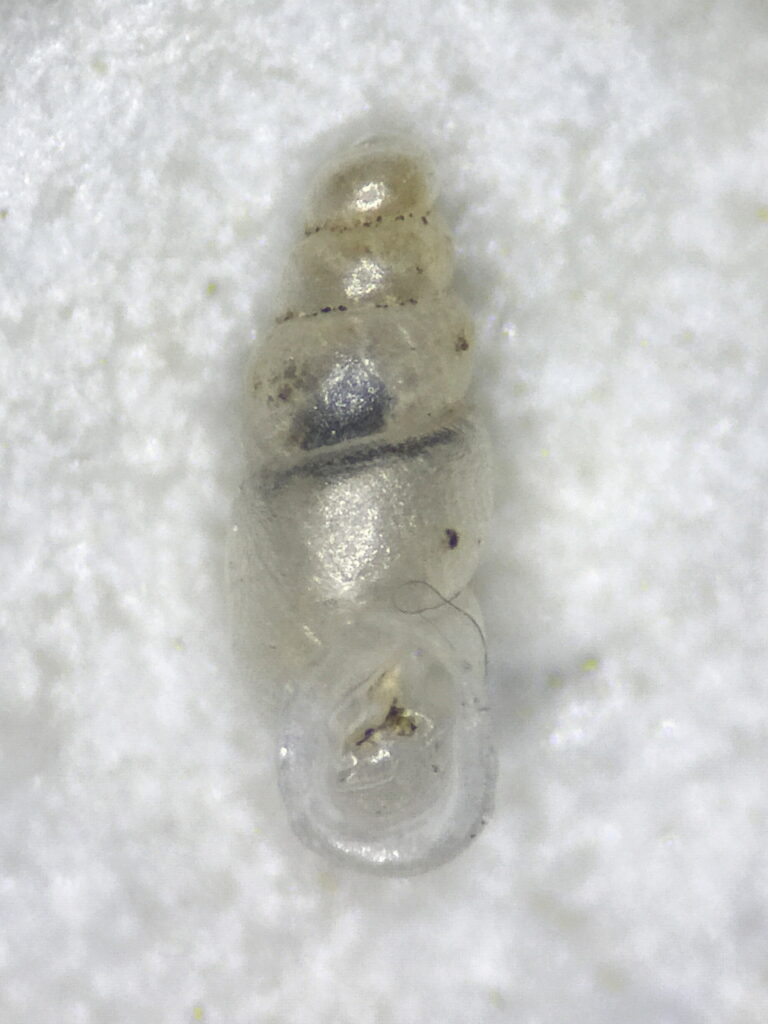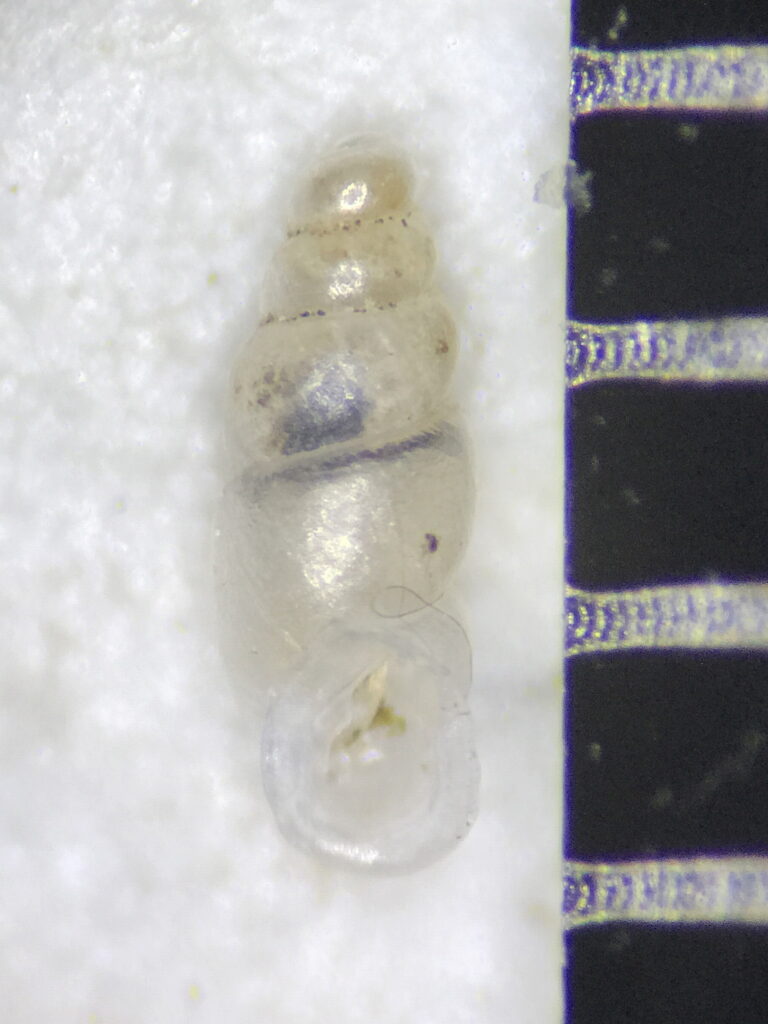



Image Usage Information
Family: Ellobiidae
Common name: File Thorn
Discovery: G. H. Clapp, 1905
Identification
Width: 0.5 mm
Height: 1.4 mm
Whorls: 4+
This long, slender shell is nearly devoid of microsculpture, and it is smaller than its relatives. The narrow body whorl does not break the plane of the shell’s aperture. It is white, with subtle teeth on each side of the aperture. The lip is very reflected and flat, especially at the columella. The aperture is not thickened within.
Ecology
Carychium nannodes is found on wooded slopes and talus, buried in deep piles of leaves and in pits left by the roots of fallen trees. Despite having similar habitats, C. nannodes, C. exile, and C. clappi are rarely found together (Hubricht 1985).
Taxonomy
No synonyms are known for this species.
Distribution
Carychium nannodes is found in most states east of the Mississippi River, from New York in the north to Mississippi in the south. In Virginia it is widely reported in the western part of the state.
Conservation
NatureServe Global Rank: G5, secure
